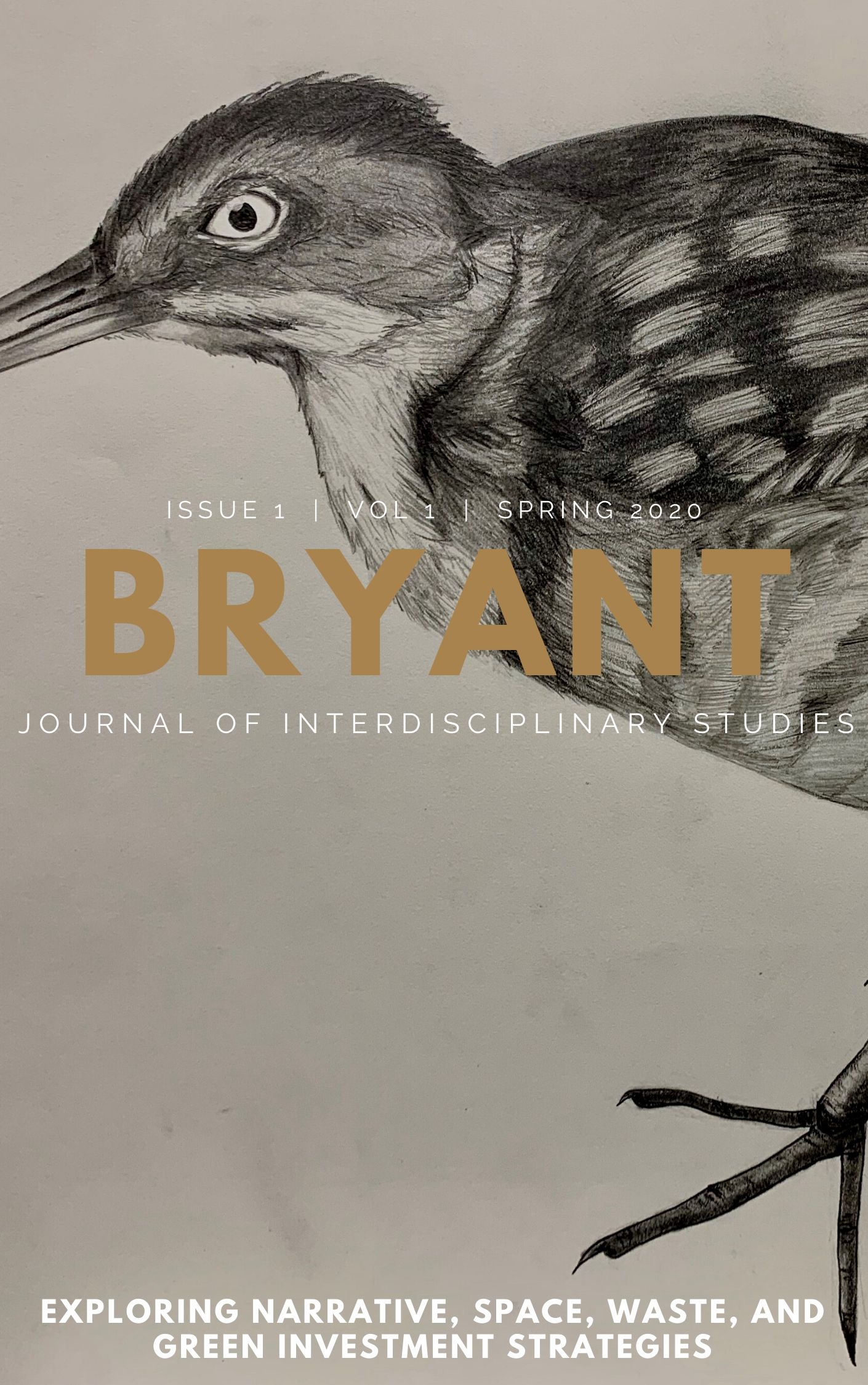Bryant University Undergraduate Journal
Abstract
A body of water is often seen as a serene place of relaxation, but just under the surface, aquatic life bustle around. This creative narrative will spark your imagination into having you believe that you are placed in the shoes of a wandering student as you encounter this great entity, known as the Bryant Pond. This journey will allow you to free your mind, and let it wander as you get lost in your own imagination. Have you ever wondered how certain things came to be, such as out-of-place objects in an environment that could have naturalistically been put there, but has a very small probability of actually being real nature? The Bryant Pond is located at the center of the university campus, and is an eye-catcher as you meander around. The pond acts as a waypoint for students, allowing them to navigate the campus with ease. Surrounding the pond are various forms of the environment, ranging from trees, to grass, to weeds and reeds around the perimeter of the pond. Since the pond is a secluded area inside of the campus, how did aquatic marine life come to be in this sort of environment with no connecting bodies of water? This would allow nothing to get in or out, unless an outside factor was to come into play. Fish swim around in the pond, and that draws the question on how they got there since there are no bodies of water connecting. Birds could have been the primary individuals that caused the influx of these marine creatures through transporting eggs in their feathers, or us humans could have planted them there to reconstruct a replica pond. Knowing and “Understanding the way that fish are dispersed in remote bodies of water is important for the maintenance of biodiversity”[1], and it can expand the wildlife that lives on Bryant’s campus. Maybe the bigger question is, what relationship do we have with the environment, and what do we do to appreciate what it has provided for us?
[1] “Dispersal of Fish Eggs by Water Birds – Just a Myth?” ScienceDaily. ScienceDaily, February 19, 2018. https://www.sciencedaily.com/releases/2018/02/180219103258.htm.
Recommended Citation
Fryer, Chris
(2020)
"The Center of the World,"
Bryant University Undergraduate Journal: Vol. 1:
Iss.
1, Article 1.
Available at:
https://digitalcommons.bryant.edu/isbhs/vol1/iss1/1


